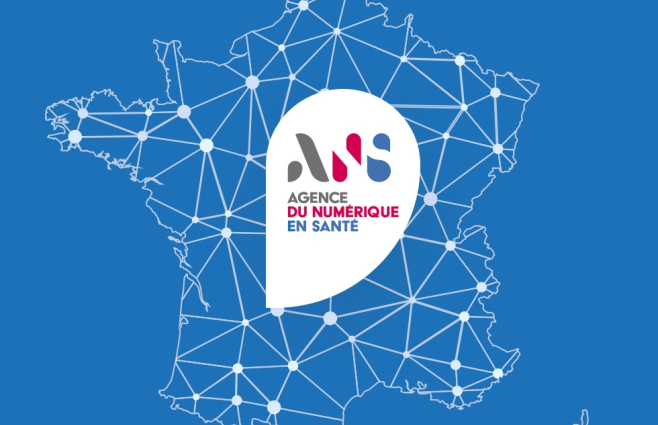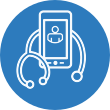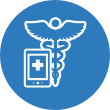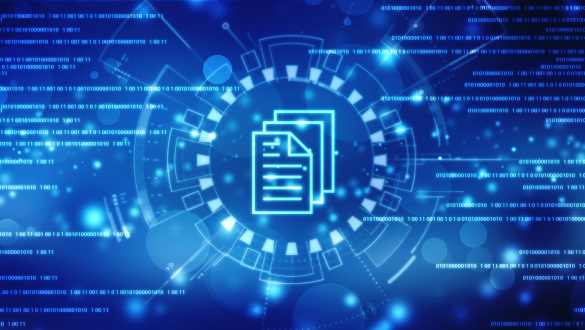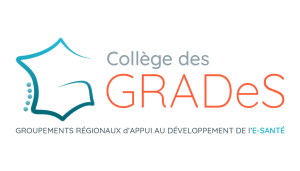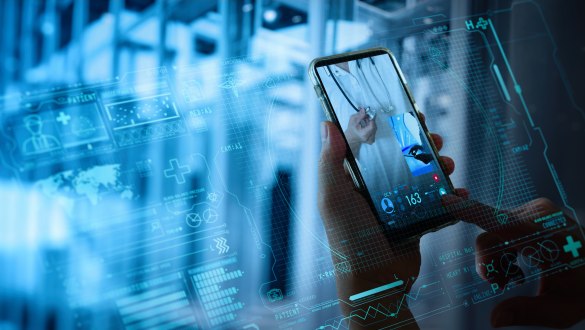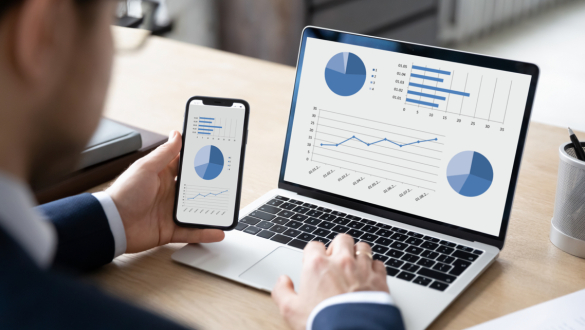Qu’est-ce que la télésanté ?
La télésanté regroupe l’ensemble des activités (soin, consultation, etc..) exercées entre des professionnels de santé et leurs patients grâce au numérique.
La télésanté est composée de 2 domaines d’activités :
- la télémédecine pour les activités réalisées à distance par un professionnel médical (médecin, sage-femme, chirurgien-dentiste) ;
- le télésoin pour les activités réalisées à distance par un professionnel paramédical ou par un pharmacien.
La télésanté en 1 clic
Le référentiel socle de la télésanté, désormais obsolète, est remplacé au fur et à mesure par des référentiels packagés sectoriels. Le premier à voir le jour en 2022 a été le référentiel des Dispositifs Médicaux numériques, incluant les DMM de Télésurveillance. Ensuite, en février 2024 est sorti le référentiel des SI de Téléconsultation. A ces 2 référentiels opposables, sera ajouté un référentiel de Téléexpertise pour compléter l’offre des référentiels de Télésanté.
Dates clés de la télésanté
Les questions que vous vous posez
L’ANS répond aux questions les plus fréquemment posées sur la Télésanté.
Le référentiel de télésanté pose les exigences liées aux fonctionnalités nécessaires ou utiles à la réalisation d’un acte de téléconsultation, téléexpertise ou de télésoin. Il couvre notamment :
- la gestion et l’administration des identités ;
- la planification et la préparation d’un acte de téléconsultation, de téléexpertise et de télésoin ;
- la réalisation, la conclusion, le paiement et la facturation d’un acte de téléconsultation, de téléexpertise et de télésoin ;
- l’administration, la sécurisation et la traçabilité des données du système.
Cette réponse vous a-t-elle été utile ?
L’ANS a conduit un état des lieux de la télémédecine en France, dans lequel 14 cas d’usages ont pu être établis, représentants 11 spécialités de médecine. Il s’agit de :
- la néphrologie, la gériatrie, la cardiologie, l’orthopédie/traumatologie, l’anesthésie, la psychiatrie, la gérontopsychiatrie (cas d’usages de la téléconsultation) ;
- la neuropédiatrie, la dermatologie et la chirurgie maxillo-faciale (cas d’usages de la télé-expertise) ;
- l'ophtalmologie, la neurologie médicale et chirurgicale, la télé radiologie, la prise en charge des plaies chroniques (cas d’usage multi-actes).
Ces cas d’usages sont présentés sous forme de fiches pratiques dans le document "Restitution des cas d’usage en télémédecine", mais ne sont pas exhaustifs et d'autres cas d'usage de télémédecine peuvent exister pour d'autres spécialités de médecine.
Cette réponse vous a-t-elle été utile ?
Le télésoin s’inscrit dans le parcours de santé du patient, coordonné par le médecin traitant. Le compte rendu est transmis de manière sécurisée au médecin traitant et aux autres professionnels de santé désignés par le patient et impliqués dans sa prise en charge pour faciliter la coordination.
Cette réponse vous a-t-elle été utile ?
Le télésoin se déroule par vidéotransmission, qui permet une identification et une communication plus facile qu’une communication téléphonique.
Le patient peut se faire accompagner par un professionnel de santé, un proche, un aidant ou un interprète pour faciliter le soin à distance ou lever les barrières technologiques. En pédiatrie, la présence d’un parent ou d’un adulte majeur est indispensable.
Pour réaliser un télésoin dans de bonnes conditions, votre environnement physique et celui du patient est essentiel. L’un comme l’autre, vous choisirez un lieu calme, lumineux, respectant la confidentialité des échanges et adapté aux éventuels exercices ou examens prévus. Veillez également à ne pas être dérangés au cours de la consultation.
Cette réponse vous a-t-elle été utile ?
L'état des lieux des équipements utilisés pour les activités de télémédecine par les professionnels de terrain a permis de recueillir, pour chaque type de structure des secteurs sanitaire, médico-sociaux ainsi que pour les professionnels de ville, la liste des équipements matériel utilisés pour la télémédecine.
Le recueil d’information s’est fait autour de la liste suivante :
- une salle (dédiée) de télémédecine ;
- une cabine de téléconsultation ;
- une console ou armoire murale avec écran ;
- un chariot de téléconsultation ;
- un chariot de visio-conférence ;
- une console type PACS ;
- un ordinateur avec webcam ;
- une tablette numérique ;
- un smartphone ;
- un lecteur de carte vitale ;
- un dermatoscope numérique ;
- un otoscope numérique (exploration des tympans) ;
- un ophtalmoscope numérique ;
- un rétinographe numérique ;
- un échographe connecté ;
- des appareils d'exploration fonctionnelles connectés (ECG, spirometre, EEG) ;
- un thermomètre connecté ;
- un stéthoscope connecté ;
- un tensiomètre connecté ;
- une balance connectée.
Pour plus d’informations, nous vous invitons à prendre connaissance de la Documentation à votre disposition.
Cette réponse vous a-t-elle été utile ?

